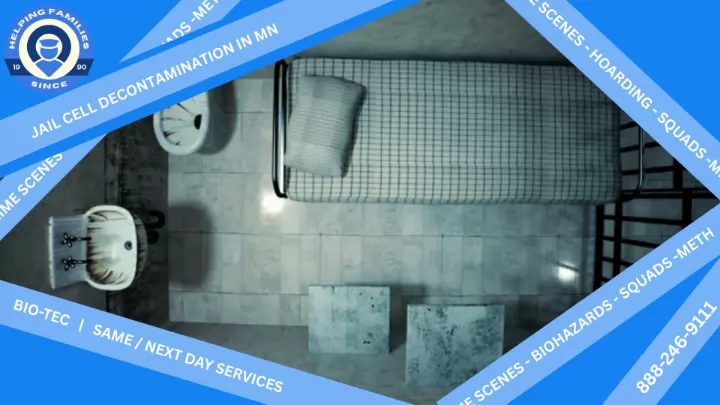Unattended Death Cleanup: Bio-Tec’s Rapid, Correct & Cost-Effective Solutions The discovery of an unattended death is a profoundly distressing experience, often leaving loved ones, property managers, or even law enforcement grappling with a scene far more complex and dangerous than initially meets the eye. Beyond the emotional devastation, an unattended death, particularly one that goes undiscovered for days or weeks, leaves behind a hazardous biological aftermath.Blood, bodily fluids, decomposition byproducts, and pervasive odors permeate surfaces, posing serious health risks.The immediate question often shifts from grief to: "Who handles Unattended Death Cleanup, what are the death

Unattended Death Cleanup
Unattended Death Cleanup: Bio-Tec’s Rapid, Correct & Cost-Effective Solutions The discovery o...
Navigating the Aftermath: Best Practices for Unattended Death Cleanup & Safe Remediation Unattended Death Cleanup is a specialized biohazard remediation process that involves cleaning and disinfecting areas where a person has passed away, often after a period of time. It requires professional expertise to handle the unique challenges of biohazards, odors, and potential structural damage. Table of Contents The Sobering Reality: Why Unattended Death Cleanup is a Critical Task Understanding the Dangers: Health Risks Associated with Unattended Death Scenes Biohazard Contamination: Bloodborne Pathogens and

Best Practices For Unattended Death Cleanup
Navigating the Aftermath: Best Practices for Unattended Death Cleanup & Safe Remediation Unattended...
A comprehensive guide to unattended Death Cleanup, covering essential steps, risks, and professional assistance. Table of Contents Introduction Why Proper Cleanup is Crucial Initial Steps After Discovery Health and Safety Risks Step-by-Step Cleanup Process The Role of Professional Services Legal and Financial Considerations Coping and Emotional Support Final Thoughts Introduction An unattended death occurs when an individual passes away and is not discovered for a period of time. Cleaning the affected area is essential to ensuring safety, eliminating health hazards, and beginni

Guide To Unattended Death Cleanup
A comprehensive guide to unattended Death Cleanup, covering essential steps, risks, and professi...
What regulations govern crime scene cleanup?
Regulations include OSHA guidelines, EPA standards, and local health department protocols that govern the handling and disposal of hazardous materials.
Does bleach kill harmful pathogens in rodent waste?
Yes, diluted bleach can kill bacteria and viruses, but professional-grade disinfectants are more effective.
What documentation accompanies each cleaning project?
Projects are accompanied by detailed logs, photographs, and a certificate of decontamination for regulatory and insurance compliance.
Are rodent feces dangerous to pets?
Yes, pets can be exposed to bacteria and parasites from rodent feces, leading to health issues.
How do remediation teams ensure all meth contamination is removed?
Professional remediation teams follow a multi-step protocol to ensure complete decontamination. This typically starts with an initial assessment and laboratory testing to map contamination levels. The next step involves removing and properly disposing of contaminated materials, such as drywall, carpets, and insulation. Non-porous surfaces are treated with industrial-grade cleaners designed to break down and neutralize meth residues. After cleaning, a post-remediation test is conducted to confirm that contamination levels fall below legal or recommended thresholds. In some cases, encapsulation techniques (like sealing surfaces with paint) are used as an extra safety measure. Every step is documented and often reviewed by health departments for compliance.
Do crime scene cleanup professionals work 24/7?
Many companies offer emergency services and are available around the clock to respond to urgent hazardous incidents.
What steps are necessary if biohazards contaminate squad car exterior door handles?
Handles are disinfected thoroughly, ensuring no pathogens remain on these high-contact areas.
What measures are used if biohazard materials are embedded in upholstery?
Specialized equipment extracts contaminants from upholstery while ensuring complete sanitization.
What measures are taken for vehicles exposed to biohazards during accident investigations?
Biohazards are removed, surfaces disinfected, and the vehicle restored to a safe condition.
What cleaning process is used after tear gas exposure?
Decontamination includes removal of residue, sanitization, and odor elimination using advanced equipment.
